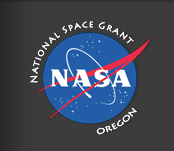In this article, we will provide a brief overview to the NASA Space Grant Consortium. The NASA Space-Grant Colleges are educational institutions in the United States that comprise a network of fifty-two consortia formed for the purpose of outer-space–related research Each consortium is based in one of the fifty states, the District of Columbia, or Puerto Rico, and each consists of multiple independent space-grant institutions, with one of the institutions acting as lead. Unlike other types of grant consortiums, these consortiums are only granted money, not land.
Created in 1988 by the US Congress based upon the success of scholarship opportunities in the Sea Grand and Land Grant Programs, the Space Grant was founded in the same vain, but for space. In 1989 administration of the program was transferred to NASA.
The program claims the following objectives: [1]
- Establish and maintain a national network of universities with interests and capabilities in aeronautics, outer space, and related fields;
- Encourage cooperative programs among universities, the aerospace industry, and federal, state, and local governments;
- Encourage interdisciplinary training, research, and public service programs related to aerospace;
- Recruit and train U.S. citizens, especially women, underrepresented minorities, and persons with disabilities, for careers in aerospace science and technology; and,
- Promote a strong science, mathematics, and technology education base from elementary through secondary levels.
Each grant program will vary in terms of size, participation, and activity, but all will generally have opportunities for students to engage with the chapter in the form of fellowships, internships, and more.
Programs
For a full list of programs, please see https://spacegrant.org/ for a full information such as eligibility, deadlines, and submission requirements. We have provided a few programs that might be of interest, which is not a reflection of what is entirely available.
Building Leaders for Advancing Science and Technology (BLAST) BLAST is a three-day summer event that takes place at Virginia’s Old Dominion University. This free, STEM-centered event, is available to 8th and 9th graders with a 2.3 GPA or better.[2] BLAST’s purpose is to show the students the interesting aspects of STEM to those who are unsure whether they want to be involved in STEM or not. For more information, check out their website at http://blast.spacegrant.org
Nationwide Eclipse Ballooning Project The NEBP is a high-altitude, balloon launching program, which can be found at its homepage at https://www.spacegrant.org/ballooning
eXploration Systems and Habitation (X-Hab) Academic Innovation Challenge The eXploration Systems and Habitation (X-Hab) challenge seeks better the academic and technological abilities of university students. It utilizes hands-on training in the implementation of space habitats for deep space missions.[3] There is an Advanced Exploration Systems (AES) Division where university students can compete to win awards worth $15,000–50,000 for a functional design that the AES finds useful and, or, interesting.[4] More inform
John Mather Nobel Scholars Established in 2008, the John Mather Nobel Scholars is a scholarship program open to NASA-Goddard Space Flight. The program provides $3,000 so that a chosen participant can share their research paper with NASA professionals. To be a part of this program, a GPA of 3.5 or higher is necessary along with being a junior or higher.
NASA KSC Higher Education Support Services The NASA/Kennedy Space Center Higher Education Support Services supports college grade Higher Education competitions. Such competitions entail internships, senior design projects, and selective grants.
Space Grant Support Services The goal of the Space Grant Support Services is to better the Space Grant network. The Space Grant Support Services supports the Space Grant network in many different ways from an economical view to a public view.
Space Systems Engineering Website The Space Systems Engineering Website is a free, six-week, online course that allows students to work and learn with NASA’s engineers. Course materials will always be accessible and students are able to use the learned resources in any way they please. More information about this program can be found at https://spacese.spacegrant.org
Pacific Northwest Participating Programs
- University of Idaho (Lead Institution)
- Boise State University
- Brigham Young University – Idaho
- Bruneau Dunes State Park
- College of Southern Idaho
- College of Western Idaho
- Craters of the Moon National Monument
- Discovery Center of Idaho
- Eastern Idaho Engineering Council
- Idaho Academy of Science and Engineering
- Idaho Department of Education
- Idaho Museum of Natural History
- Idaho National Laboratory
- Idaho Out-of-School Network
- Idaho Science Teachers Association
- Idaho State University
- Idaho STEM Action Center
- Idaho Transportation Department – Division of Aeronautics
- Lewis-Clark State College
- North Idaho College
- Northwest Nazarene University
- Palouse Discovery Center
- The College of Idaho
- University of Idaho
- Oregon State University (Lead Institution)
- Eastern Oregon University
- Evergreen Aviation & Space Museum
- George Fox University
- Lane Community College
- Linn Benton Community College
- The Museum at Warm Springs
- Oregon Coast Community College
- Oregon Institute of Technology
- Oregon Museum of Science and Industry
- Pacific University
- Portland Community College
- Portland State University
- Southern Oregon University
- Southwestern Oregon Community College
- University of Oregon
- University of Portland
- Western Oregon University
Washington NASA Space Grant Consortium
- University of Washington is the leading and only institution in the state of Washington.
Resources And Further Reading
[1] = National Space Grant College and Fellowship Program(Space Grant)
[2] = http://blast.spacegrant.org
[3] and [4] = https://spacegrant.org/programs/xhab/

Be the first to comment on "NASA Space Grant Consortium In The PNW"